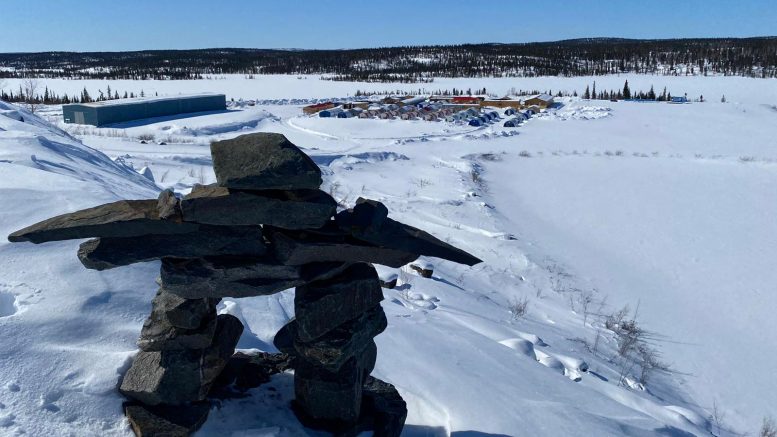This week, Canada’s Minister of Transport, Omar Alghabra, travelled nearly 5,000 km away from his base in Ontario to Yellowknife in the Northwest Territories, not to make a new announcement, but to promote elements of this year’s federal budget tabled in early April that allocates a massive $3.8 billion to support the country’s critical minerals sector.
Standing in front of an Air Tindi plane at Det’on Cho Logistics, Alghabra said, “There’s a reason why I came up here,” and then talked about how the resources in the region are among the country’s richest and the good work that the territories have done to “understand” their natural resources and to find ways to extract them in a sustainable way.
This isn’t the first time that a minister has touted Canada’s North, which has a number of critical mineral projects in the advanced stages – in addition to operating diamond and gold mines, as an essential force to develop the country’s mineral strategy.
But Alghabra’s visit, combined with a supportive budget for the mining sector and the recent surge in investments to promote the development of a battery ecosystem in the country, suggest an urgency in creating a friendly environment for mining in the North.
While resources in the North may be prevalent, most mines and projects aren’t connected to the grid and largely depend on diesel for power, which runs counter to the use of many critical minerals to decarbonize the economy.
“There’s an irony in all of this. Here we are trying to produce critical minerals, and we are having to use fossil fuels,” said Tom Hoefer, executive director of the Northwest Territories and Nunavut Chamber of Mines, in an interview with The Northern Miner. “That’s just not the best situation and so we would like to see those mines supported with green power.”
Northern infrastructure deficit
Hoefer explains that when it comes to power, “virtually all” the mines in the territories and Nunavut depend upon diesel generators. Almost none of the mines in the region have all-season access, which also makes it difficult to shift to relatively cleaner energy sources such as liquefied natural gas, since these have shelf lives, he adds.
“The two territories have the biggest infrastructure deficit… we don’t have roads, ports, railway lines… but at the same time because we are so big, we include a number of geological provinces, which means lots of mineral potential,” said Hoefer. “We are a bit up against the wall when it comes to power.”
Without an all-season road, the northern mines can’t use liquefied natural gas (LNG) either, which is cleaner than diesel but have shelf lives, explains Hoefer. “Our diamond mines can’t bring in LNG on a seasonal ice road because then they need to pay too much money to keep the stuff refrigerated,” he said.
There have, however, been some efforts to introduce renewable energy. Rio Tinto’s (NYSE: RIO; LSE: RIO; ASX: RIO) Diavik mine, which produced about 5.8 million carats of diamond last year and is located about 200 km south of the Arctic Circle, utilizes wind energy to offset about 10% of its diesel usage, says Hoefer.
Agnico Eagle Mines (TSX: AEM; NYSE: AEM), which runs a number of gold mines in Nunavut is also looking to utilize wind energy, but has yet to make any installations.
Unless drastic measures are taken, the power situation is likely to worsen Hoefer says, since Canada’s carbon tax on fuel is set to increase every year until it reaches $170 per tonne in 2030.
“The carbon tax’s intent is to alter behaviour and shift to alternatives, but there is an unintended consequence,” Hoefer said. “The reality is that we don’t have the ability to shift to an alternative effectively in the north. We are getting pinched here unfairly… we have fallen way behind in infrastructure, so that is not fair for operators here.”
In a bid to tackle the power issue, the territorial government intends to expand its Taltson hydro-electric dam and power communities and regions with mines. The project though is still in its planning stages.
Federal support needed
Northwest Territories Finance Minister Caroline Wawzonek who was with Alghabra in Yellowknife this week believes that the Taltson project can be successful with support from the federal government.
“We have a deficit of infrastructure both in terms of the amount of infrastructure that we have and in terms of its age,” said Wawzonek at the press conference on Apr. 20. “We have several advanced projects… that stand to benefit from investments whether it be connecting roads (or) that allow for better hydro access for energy.”

The ice road to the Ekati and Diavik diamond mines in the Northwest Territories. Credit: Dominion Diamond.
She also hoped that announcements made in the 2022 federal budget with regards on the critical minerals sector would help “accelerate” projects in the region and move them into the production phase.
Hoefer echoes a similar sentiment. “With the critical minerals situation and climate change, there is an urgency which the federal budget clearly spells out,” he said. “Canada wants to be a player… and the north is clearly going to be a player in that, but we want to be a very clean player and need the government support.”




Be the first to comment on "As demand for critical minerals rises, Canada’s North hopes to be a clean player "